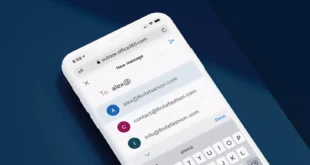In the world of sales and marketing, where businesses constantly strive to engage with potential customers and increase their revenue streams, two crucial concepts often emerge appointment setting and lead generation. These terms are frequently used interchangeably, leading to confusion and misalignment in marketing and sales efforts.
Table of Contents
Distinction Between the Appointment Setting & Lead Generation

Understanding the clear distinction between appointment setting and lead generation is pivotal for businesses for several reasons:
Resource Allocation
When businesses need to differentiate between the two, they may misallocate resources, such as time and budget. For instance, they might invest heavily in appointment setting without generating enough qualified leads or focus solely on lead generation without converting those leads into actual sales appointments.
Strategy Development
Recognizing the differences allows organizations to develop more targeted and effective strategies for each sales cycle stage. This enables them to tailor their approaches to prospects’ needs and behaviors at different points in their journey.
Sales and Marketing Alignment
Distinguishing between these processes facilitates better alignment between sales and marketing teams. Marketing teams can focus on generating high-quality leads, while the sales team can concentrate on converting those leads into appointments and customers.
Performance Evaluation
With clarity on these distinctions, businesses can establish relevant Key Performance Indicators (KPIs) for each stage, making it easier to measure success, identify bottlenecks, and continuously optimize their processes.
Appointment Setting or Lead Generation – What Should You Go For?

Both these two strategic moves are crucial to the success of your business. However, establishing a clear distinction between appointment setting and lead generation is crucial to optimize sales and marketing efforts. Choosing the right appointment setting company can be a game-changer in streamlining your sales efforts and maximizing lead conversion. The primary differences are as follows:
Appointment Setting
- Focus: The appointment setting primarily involves arranging meetings or interactions between a sales representative and a qualified lead.
- Timing: It typically occurs after initial interest or engagement from the lead is established, meaning the lead has expressed interest or need.
- Outcome: The main goal is to secure a direct interaction with the prospect, such as a phone call, in-person meeting, or virtual presentation.
Lead Generation
- Focus: Lead generation identifies, attracts, and captures potential customers or leads who have yet to express direct interest.
- Timing: It occurs at the earlier stages of the customer journey, often when prospects are still researching or exploring options.
- Outcome: The primary objective is to gather contact information and initiate a relationship, often through content or offers, such as eBooks, webinars, or email subscriptions.
Common Overlaps Between Appointment Setting & Lead Generation

Despite the clear distinctions, common misconceptions and overlaps between appointment setting and lead generation exist:
Lead Confusion
Sometimes, leads successfully scheduled for appointments should be categorized as generated leads. It is essential to differentiate between leads who have merely expressed initial interest and those who have committed to meetings and is on the verge of being closed by a sales professional.
Over-Eagerness
There can be a tendency to rush into an appointment setting without proper lead nurturing. Pushing for appointments too quickly can deter potential leads who may still need to be ready for direct engagement.
Assumption of Interest
If all leads generated through various channels are automatically interested in appointments can lead to inefficiencies and wasted resources. Not all generated leads are appointment ready.
How Can Appointment Setting Culminate into to Lead Generation?

While appointment setting and lead generation are distinct, they are interrelated, and appointment setting can significantly contribute to lead generation. Many businesses use outbound call center services to enhance appointment-setting strategies and improve lead-generation outcomes.
Qualification
During the appointment-setting process, sales representatives engage with leads and assess their interests, needs, and readiness to purchase. This qualification helps identify valuable leads, contributing to a more refined lead generation strategy.
Data Enrichment
Appointment setting often involves gathering additional information about leads, such as specific pain points or objections. This data enrichment can enhance lead profiles and inform more targeted lead-generation efforts.
Personalization
When appointments are successfully scheduled, it creates a personalized interaction between the sales representative and the prospect. This personalized experience can leave an impression and nurture the lead further, increasing the chances of conversion.
Feedback Loop
Insights gained during the appointment-setting process, such as objections or questions raised by leads, can be valuable feedback for refining lead-generation content and messaging.
The Conclusion
The sales and marketing landscape continually evolves, influenced by technological advancements, changing consumer behavior, and market dynamics. As businesses adapt to these shifts, they must remain agile and open to innovation. Understanding the distinctions between appointment setting and lead generation and strategically incorporating both into your sales and marketing efforts can drive business growth and success. By embracing innovation and customer-centricity in an evolving landscape, businesses can adapt and thrive in the competitive world of sales and marketing.
 World Magazine 2024
World Magazine 2024






